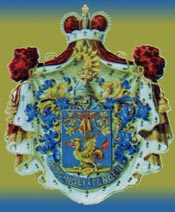
19th Century Lifestyles
Reliable sources exist today that describe in some detail the lifestyles of the Dadianis in the mid-to-late 19th century-during the last years of the Principality of Samegrelo and afterward. The memoirs of Konstantin Borozdin, an official in the Russian administrative office at Zugdidi during the regency of David Dadiani's widow Ekaterine, provide a glimpse of life in the palace court at that time. And the writings of Baroness Bertha von Suttner, a personal friend of Ekaterine, paint a picture of the Dadianis’ lives as expatriate aristocrats in Europe after they no longer exercised formal political power.
Zugdidi Court Life
In the time of Ekaterine Dadiani, the palace court at Zugdidi demanded a special regime to all were obliged to submit, including the Queen and the Principal. In addition to the work of formal governance, a large part of a typical day was consumed with hearing petitions. According to custom, any of the ruler's subjects could come to the ruler with a grievance or request, and the ruler had to hear the petitioner and send that person away satisfied.
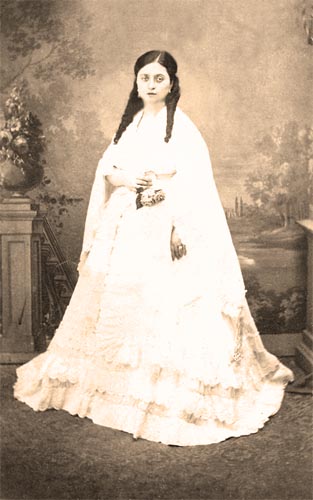 |
Petitions were arranged through one of two administrative offices (Georgian and Russian) that were housed in separate buildings near the palace. In addition to applications for petitions, these offices handled all official correspondence with the ruler, including circulars from the Russian governor in Tbilisi and other official communications.
Konstantin Borozdin's words convey a vivid picture of some of the quotidian details of life in the Zugdidi residences:
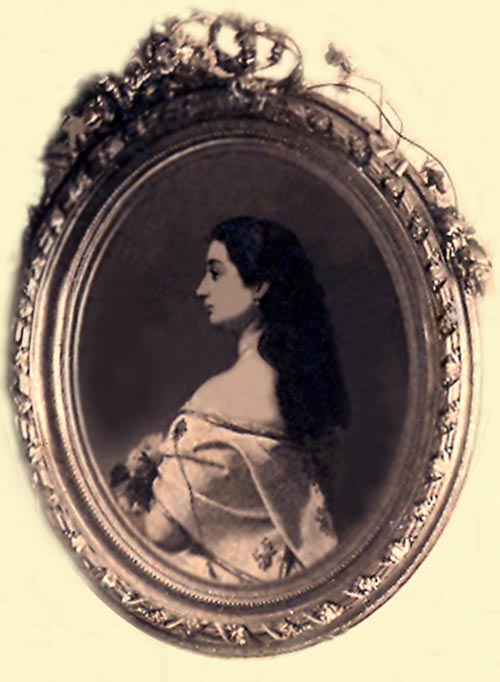 |
When the Queen went somewhere, she was always attended by the court retinue. The chief in this retinue was the steward, who had several assistants. Then followed a whole bevy of young boys of noble descent who wore motley clothes and carried handsome arms. These youths were called "home serfs" and they served the Principal. Two of them were on daily duty, reporting about the arrival of guests and petitioners and reporting back to them the Principal's words. It was also their duty to replace plates at table and to serve wine. These youths were trained brilliantly, well-bred, deft, and of refined demeanor; nearly all spoke Russian. Most of them had gone to Martvili Theological School; they danced elegantly and sang Mingrelian songs pleasantly. When the Principals arranged great feasts, they seated this chorus at a separate table, and as the first course was served they struck up a song, as if they were an orchestra.
Life was mostly routine. Every morning, the Queen and her home serfs attended the morning service; breakfast was served at noon; then began the reporting and reception of guests; dinner was at five o'clock, and at six o'clock they went to the evening service. In the evening, the home servants were allowed to go home, and the Queen remained with her own people.
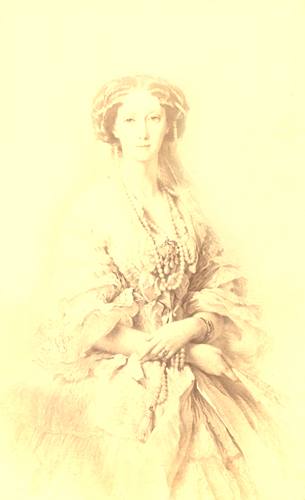 |
The fast was strictly kept, and at major holidays the chqondideli came and conducted divine service with great solemnity. When the Queen moved from one place to another she was attended by a very colourful retinue.
Bertha von Suttner's Memoirs
An interesting glimpse into the lives of the Dadianis in the later 19th century is provided in the memoirs of Baroness Bertha von Suttner (1843-1914), an Austrian novelist and peace activist, and the first woman to win the Nobel Peace Prize. Von Suttner became a friend of Ekaterine Dadiani after the two met at a resort in Hamburg during Ekaterine's expatriate years in Europe (1857-1867). Thereafter, von Suttner was a frequent guest of the Dadiani family. Given the timing of this relationship, von Suttner's recollections of Ekaterine and her family pertain exclusively to the years after the Dadianis had lost their formal political power.
A Meeting with the Tsar
Even after losing their power, the Dadianis remained a wealthy and prominent family. Von Suttner notes that Ekaterina and her children lived in considerably luxury in Hamburg, where Ekaterine rented a whole floor of a beautiful palace, spent her time in salons and performances, and had a personal box at the theater.
One afternoon Ekaterine and von Suttner were sitting on an outdoor terrace with some of their friends when they received word that Russian Tsar Alexander II, a personal acquaintance of Ekaterine's, was in Hamburg and on his way to pay a visit. Shortly afterward, Alexander and his entourage entered the park adjoining the terrace on which the ladies sat. Upon seeing Ekaterine, he ran up the stairs of the terrace to greet her. Ekaterine rose to her feet, and the Tsar took her hand and kissed it. Von Suttner writes,
We were standing nearby, at a respectful distance, but I still managed to overhear the words of the Emperor, spoken loudly in French: Let's go to the gaming hall, shall we? He offered the Queen his arm, and we followed.
Von Sutter recounts that at the roulette table, Alexander borrowed several gold coins from Ekaterine-either because he was carrying no money himself, or because he thought borrowed money would bring him luck-and placed a bet on red. Although he won that spin, in the end "the ruthless rakes" (that is, the croupiers) cleaned him out.
The Marriage of Salome Dadiani
In the 19th century, matchmaking was a common practice among the aristocracy, as it was widely accepted that matches should be among social equals. Therefore, Ekaterine was eager to find a suitable match for her daughter, Salome, among the European aristocracy. She found one in Achille Murat, the son of France's Prince Lucien Murat and his American wife. Achille was one of the handsomest young men of Parisian high society, and Salome readily acceded to the suggested match. Von Sutter relates that from the first day of their engagement on, Achille sent a huge bouquet of white flowers to the Dadiani residence every morning, and came to visit every afternoon.
The wedding took place in May, 1868. Because of the differing religions of the couple, this involved three separate ceremonies: a civil registration of the marriage at the municipality; a Catholic wedding in the Tuileries, with the Emperor and Queen of France in attendance; and an Orthodox wedding later that night. At the latter, Bertha von Suttner was Salome Dadian's maid of honor. According to von Suttner, Salome wore a wedding veil woven with golden threads and topped by a diamond diadem-a wedding gift of the Queen of France. After the wedding, a ceremonial ball was held at the Dadiani residence.
The Marriage of Niko Dadiani
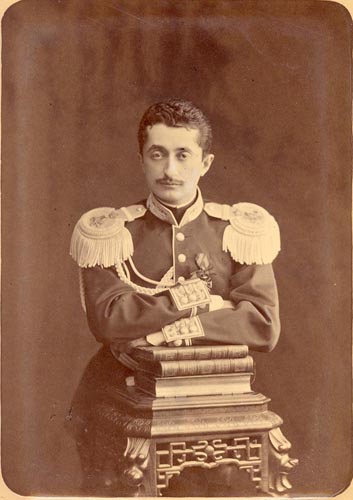 |
Niko Dadiani's marriage was an even grander event then his sister's. In the spring of 1874, Niko married Mary Adlerberg, the daughter of a Count. The marriage was a huge occasion for celebration in Samegrelo, comparable perhaps to the outpouring of media attention and national pride that greeted the marriage Britain's Prince Charles to Lady Diana Spencer in 1981. Niko and Mary's wedding was held in Europe, and their subsequent trip to Samegrelo prompted national celebration on a huge scale. Von Suttner describes the occasion, based on letters she received from Ekaterine:
The couple had their own ship to take them from Odessa to Poti. From Poti, they took a train to Kutaisi. On the way, they were met with cheering, joyful people, wishing them well and firing guns into the air. The population was standing along the road; peasants, gentry, noblemen-everyone. The newlyweds were obliged to stop the train now and then, come out, and pass under flower arbors to waiting tables for a feast. They stayed in Kutaisi for two days and attended endless feasts, balls, and receptions.
Proceeding onward by carriage, the couple came to a bridge in the mountain pass over a wild river that marked the border of Samegrelo. There, they exited their carriage and walked over the carpet-decked bridge through yet more arches of flowers to a waiting group of local noblemen, who toasted the newlyweds, mounted horses, and escorted them onward.
The approach of the newlyweds to the Gordi Palace, where Ekaterine waited on the balcony, was announced with cheers, applause, ringing bells, the music of a military band, and cannon salvos that echoed through the surrounding mountains. According to a Russian custom of that time, the newlyweds received bread and salt from the housemaster, then approached Ekaterina and kneeled to receive her blessing. At this moment, the assembled crowds fell into a respectful silence. After a church service to mark the occasion, a feast commenced that lasted until midnight, with festivities continuing the next day-which happened, by coincidence, to be Mary Adlerberg's birthday.
[ TOP ]
